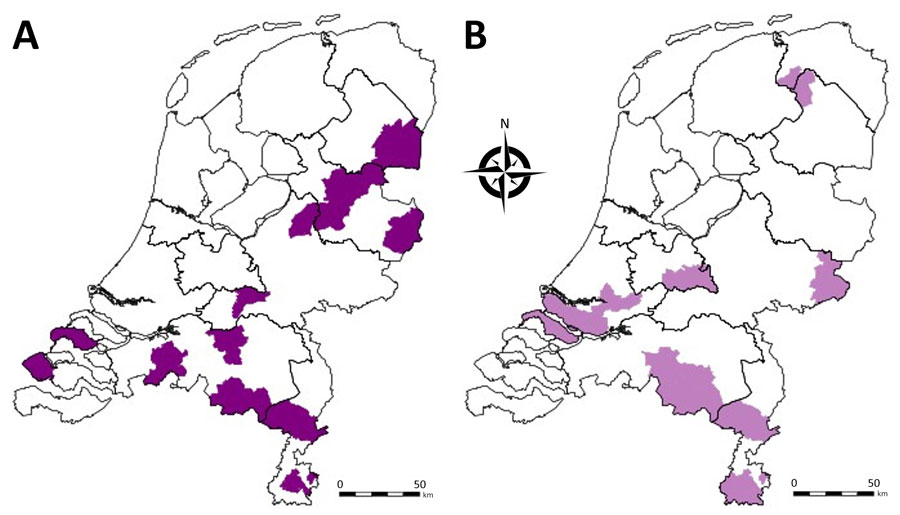Volume 30, Number 8—August 2024
Research
Emergence of Bluetongue Virus Serotype 3, the Netherlands, September 2023
Figure 5

Figure 5. Geographic distribution of bulk milk samples in the Netherlands tested for bluetongue virus (BTV) antibodies in study of emergence of BTV serotype 3 in September 2023. Milk samples were collected in August 2023. Purple shading indicates locations of dairy cattle herds that had animals considered potential positive or positive for BTV-specific antibodies by using ELISA. A) Herds having evidence of vaccination in the previous 5 years. B) Herds having no evidence of vaccination in the previous 5 years.
1These authors contributed equally to this article.
Page created: June 13, 2024
Page updated: July 20, 2024
Page reviewed: July 20, 2024
The conclusions, findings, and opinions expressed by authors contributing to this journal do not necessarily reflect the official position of the U.S. Department of Health and Human Services, the Public Health Service, the Centers for Disease Control and Prevention, or the authors' affiliated institutions. Use of trade names is for identification only and does not imply endorsement by any of the groups named above.